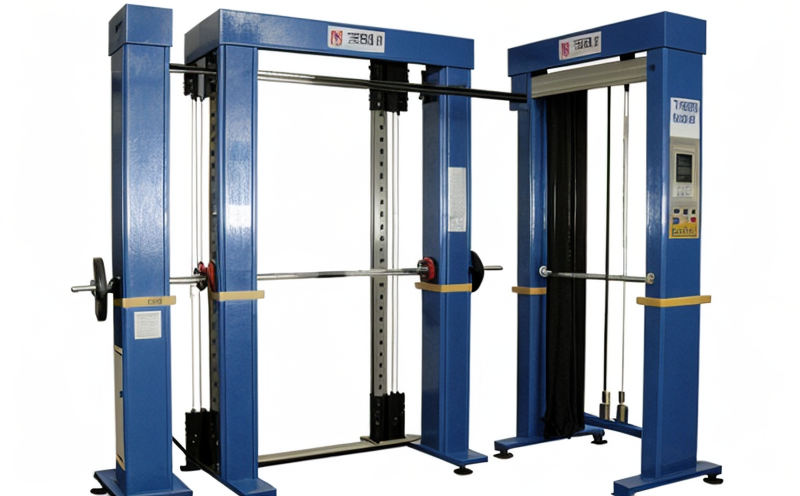NF EN ISO 7211-2 Textiles Determination of threads per unit length
The determination of threads per unit length is a crucial aspect in the textile industry, ensuring product quality and compliance with international standards. This service focuses on precisely quantifying the number of threads within a specified area or length using NF EN ISO 7211-2 methodology. The test is essential for assessing fabric density, which directly impacts the performance, durability, and aesthetic appeal of textiles.
The process involves carefully selecting a representative sample from the textile material being tested. This sample must be cut with specific dimensions according to the standard requirements. Once prepared, it undergoes microscopic examination under controlled lighting conditions to ensure accurate counting. The number of threads per unit length is then calculated and reported based on these observations.
The accuracy of this measurement plays a significant role in several sectors including fashion design, manufacturing, quality control, and research and development. By adhering strictly to NF EN ISO 7211-2 guidelines, laboratories can provide reliable data that helps manufacturers meet their specifications while maintaining consistent product quality across different batches.
Compliance with international standards like NF EN ISO 7211-2 is not only important for ensuring high-quality products but also crucial for meeting regulatory requirements set by various countries and industry bodies. This service ensures that clients receive accurate results which are internationally recognized, enhancing trustworthiness in the market.
Understanding the importance of thread count helps textile manufacturers optimize their production processes to achieve desired fabric qualities such as softness, strength, and appearance. For example, increasing the number of threads per inch typically results in a finer weave but may increase costs due to higher yarn counts required during manufacturing.
| Use Case | Description |
|---|---|
| Fabric Design and Development | Determining the optimal thread count for different fabric types enhances design versatility while meeting specific performance criteria. |
| Quality Assurance | Evaluating consistency in thread counts across production batches ensures uniform product quality. |
The precise measurement of threads per unit length using NF EN ISO 7211-2 is vital for maintaining high standards within the textile industry. It aids manufacturers in making informed decisions about fabric selection, improving overall product performance and customer satisfaction.
- Enhances consistency across production runs
- Aids in meeting international quality benchmarks
- Supports innovation through better understanding of material properties
Why It Matters
The precision and reliability provided by NF EN ISO 7211-2 testing are critical for various stakeholders within the textile industry. Quality managers rely on accurate thread count data to ensure consistent product quality, while compliance officers must confirm that their products meet all necessary regulatory standards.
R&D engineers benefit from detailed measurements as they strive to innovate new fabrics and processes. Understanding how varying thread counts affect material performance allows them to create superior products tailored to specific applications. Procurement teams also find value in this service since it provides insight into supplier capabilities, helping identify reliable partners who consistently deliver high-quality materials.
Accurate measurement of threads per unit length contributes significantly towards improving customer satisfaction by delivering fabrics that meet expectations regarding texture and durability. This information is essential for tailoring products to suit diverse markets globally, ensuring they perform well under varying environmental conditions.
The importance of NF EN ISO 7211-2 cannot be overstated; it serves as a foundation upon which all aspects of textile manufacturing, design, and quality assurance are built. By adhering strictly to these standards, businesses can gain competitive advantages through superior product offerings that surpass industry norms.
Benefits
The benefits of conducting NF EN ISO 7211-2 tests extend beyond mere compliance; they offer substantial advantages that positively impact various facets of the textile business. One key benefit is enhanced trustworthiness, which translates into greater market confidence and loyalty among consumers.
Accurate measurement leads to consistent product quality, reducing variability between batches or suppliers. This consistency is vital for maintaining brand reputation and ensuring customer satisfaction. Additionally, by adhering to international standards such as NF EN ISO 7211-2, companies demonstrate their commitment to excellence, thereby attracting more business opportunities.
For R&D teams, precise thread count data provides valuable insights into material behavior under different conditions, enabling them to refine designs and improve product performance. This leads not only to better products but also increased innovation rates within the organization.
In terms of cost-effectiveness, accurate measurements help avoid wastage during production processes by ensuring optimal use of raw materials. Moreover, compliance with international standards reduces potential legal risks associated with non-conforming goods.





